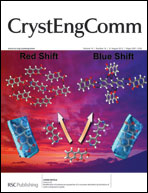The design and fabrication of solid nanomaterials is the core issue in heterogeneous catalysis to achieve desired performance. Traditionally, the main theme is to reduce the size of the catalyst particles as small as possible for maximizing the number of active sites. In recent years, the rapid advancement in materials science has enabled us to fabricate catalyst particles with tunable morphologies. Consequently, both size modulation and morphology control of catalyst particles at the nanometer level can be achieved independently or synergistically to optimize their catalytic performance. In particular, morphological control of catalyst nanoparticles can selectively expose reactive crystal planes, and hence drastically promote their reaction efficiency. We highlight, in this review article, the recent progress on crystal-phase and shape control of Fe2O3 nanomaterials that act as essential components in heterogeneous catalysts. We initially summarize the major synthetic strategies of shape-controlled α- and γ- Fe2O3 nanomaterials. We then survey morphology- and crystal-phase-dependent nanocatalysis of these ferric oxides for a couple of chemical reactions. In this context, we stress that the catalytic property of Fe2O3 nanomaterials is closely linked to the surface atomic configurations that are determined both by the shape and the crystal-phase. Finally, we provide our perspectives on the future development of Fe2O3 nanomaterials through tailoring their shape and crystal-phase. The fundamental understanding of crystal-phase- and morphology-tunable nanostructures that are enclosed by reactive facets is expected to direct the development of highly efficient nanocatalysts.

You have access to this article
 Please wait while we load your content...
Something went wrong. Try again?
Please wait while we load your content...
Something went wrong. Try again?


 Please wait while we load your content...
Please wait while we load your content...